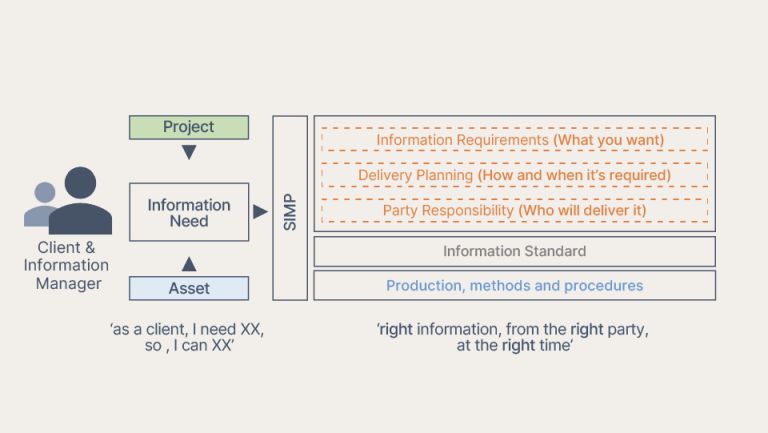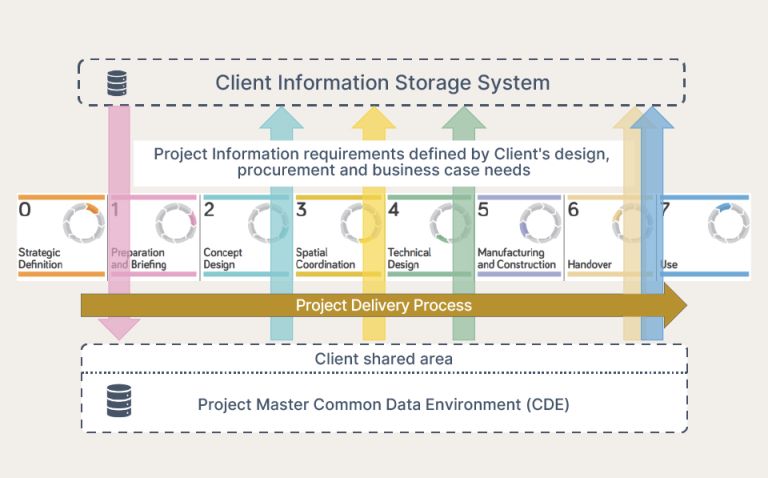Key principles
Through the adoption of the Standard Information Management Plan on projects, the following key principles are applied:
Information Requirements – The What, When and Who
The resource establishes what information is needed, when it should be delivered, and by whom. It provides clients/ contracting authorities:
- An initial set of prescribed project information requirements with defined purposes for review and evolution at the project outset.
- An exemplar client folder arrangement for consistent collation and transfer of project information at key delivery milestones. [SIMP Template 2]
- A master list of maintainable assets based upon typical building condition survey and statutory compliance activities, for review and evolution as the project design progresses.
- A baseline set of project asset data deliverables [COBie] with associated asset grading and naming conventions, to be sequentially delivered at key information delivery milestones.

People – Skills, Roles & Terminology
It is paramount that appropriate skills, expertise, clear roles, responsibilities and consistent terminology are established on projects. The resource:
- Supports the appointment of a qualified party to undertake all or part of the project information management function on behalf of the client/ contracting authority. A Client Information Manager scope of services template is available here.
- Helps to establish project team roles and responsibilities for managing and delivering the information management tasks.
- Is aligned with the BS EN ISO 19650: 1 and 2 international standards, including associated terminology.
Standards – Process and Delivery
The Standard Information Management Plan enables the specification, production and delivery of quality project information through a standardised and consistent information management process. It:
- Enables the client / contracting authority to establish the overall project’s information standard, production methods and procedures for project team adoption.
- Establishes key project information delivery milestones from project preparation and briefing through to handover. The delivery milestones should be aligned with key governance, gateway approval, project delivery and procurement requirements.
- Embeds the UK construction industry Uniclass classification system, for consistent classification assignment of information deliverables and project related assets.
Supporting Technology – Information Management
Core aspects of a collaborative information management process are the sharing, storing and accessibility of information.
A common data environment (CDE) should be established at the project outset to serve the overall requirements and support the collaborative delivery of information. An appropriate technology solution should be deployed to host and effectively manage the project information at all stages.
When adopting the Standard Information Management Plan resource clients/ contracting authorities should ensure:
- A CDE strategy is developed for all project stages and clearly recorded and communicated to all parties.
- The format, methodology and technology solution upon which project information is transferred to the client / contracting authority at each information delivery milestone is clearly recorded and communicated to all parties.
The resource can support contracting authorities deliver appropriate project and asset information using BIM in accordance with BS EN ISO 19650, and it is the responsibility of the client / contracting authority to seek appropriate advice to tailor the Standard Information Management Plan to the needs of their organisation and project.


